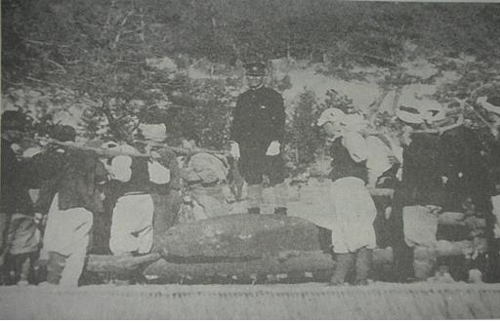
Sorokdo National Hospital recently published a series of books shedding light on the island’s past and present in treating patients with Hansen’s disease, in commemoration of its 100th anniversary last year.
The hospital published three books – history, medical and photo.
According to the U.S. Centers for Disease Control and Prevention (CDC), Hansen’s disease, also known as leprosy, is an infection caused by slow-growing bacteria called Mycobacterium leprae. It can affect the nerves, skin, eyes, and lining of the nose.
With early diagnosis and treatment, the disease is treatable. However, if left untreated, the disease can cause nerve damage, including crippling of hands and feet, paralysis, and blindness.
The history section of the book contains the insights of the past and the commitment to the future, which, unlike other books, illustrates the performance and development of Sorokdo National Hospital.
It especially highlights the unfortunate past regarding the hospital’s role in the treatment of patients with leprosy, while hinging the improvement of the quality of their lives, from an objective point of view. It also goes into detail about the sacrifice and participation of the Hansen people in developing the treatment of the disease.
The hospital, located on Sorok Island, South Jeolla Province, has been a communal habitat for leprosy patients for 100 years since 1916.

Japan used it as a concentration camp-style clinic for leper patients during its colonial rule of Korea from 1910 to 1945. Considered a “hell on earth,” the Japanese imperial authorities forcefully relocated lepers to the island, while evicting the island’s original inhabitants.
During that time, the island was a place where residents were regularly forced to do harsh labor. Some of the patients also received undesired vasectomies from the doctors, who feared that the disease might be hereditary.
Even after Korea gained independence from Japan, the treatment of Hansen patients did not improve. The book goes into detail about the massacre of 84 leper patient committed by hospital employees right after Korea’s liberation from the Japanese colonial rule in 1945, considered one of the horrific events perpetrated by the hospital staffs.
“The shooting and massacres of at least 84 patients on Aug. 22, 1945, is considered a genocide committed by armed staff,” the book wrote. “This incident was a tragedy, in which the inhuman despot and oppression and a deeply rooted discriminative consciousness caused by the Japanese imperialists’ isolationist policy, and resistance to dispel such treatment encouraged by the political situation right after the liberation."
In 2007, the National Assembly passed a law calling for an investigation into the human rights violations and financial support of its victims. Despite such actions, the government only provides a monthly compensation of 150,000 won ($140) to the victims. Even this is allegedly hard to receive as patients need to belong in the low-income brackets, while also requiring confirmation as a victim of human rights violation by authorities.
The medical section describes the flow of the international leprosy policy, changes in the subjects and systems that operate and manage hospitals, and the development of therapeutic drugs to treat the disease.
The photo section shows the daily lives of patients on the island, including their education and religion.
“These books contain insight into the past of Sorok Island and future commitment to its patients,” Sorokdo National Hospital said in a statement. “They also describe the unfortunate past from an objective viewpoint, in which the hospital forgot its proper role in treating leprosy, and the improvement of the quality of life of its patients.
Although South Korea abolished its anti-leprosy segregation policy in 1963, misunderstandings and stigma toward the disease remain, however. The Ministry of Health and Welfare, responsible for providing medical support to the patients, has kept parts of the island open for tourist to correct the misunderstanding of the disease and its patients.
The hospital is still operating, accommodating 511 leper patients last year. However, a lot has changed as anyone diagnosed with the illness can be admitted to the hospital, and anyone who wishes to leave the hospital can do so after treatment.
Also, all expenses incurred for medical treatment and daily life support of hospitalized Hansen are borne by the government.
“The recognition of the Hansen patients in our society has improved a lot due to the support and love from the public,” a hospital official said. “The hospital asks for the public’s constant interest in the Hansen family.”

